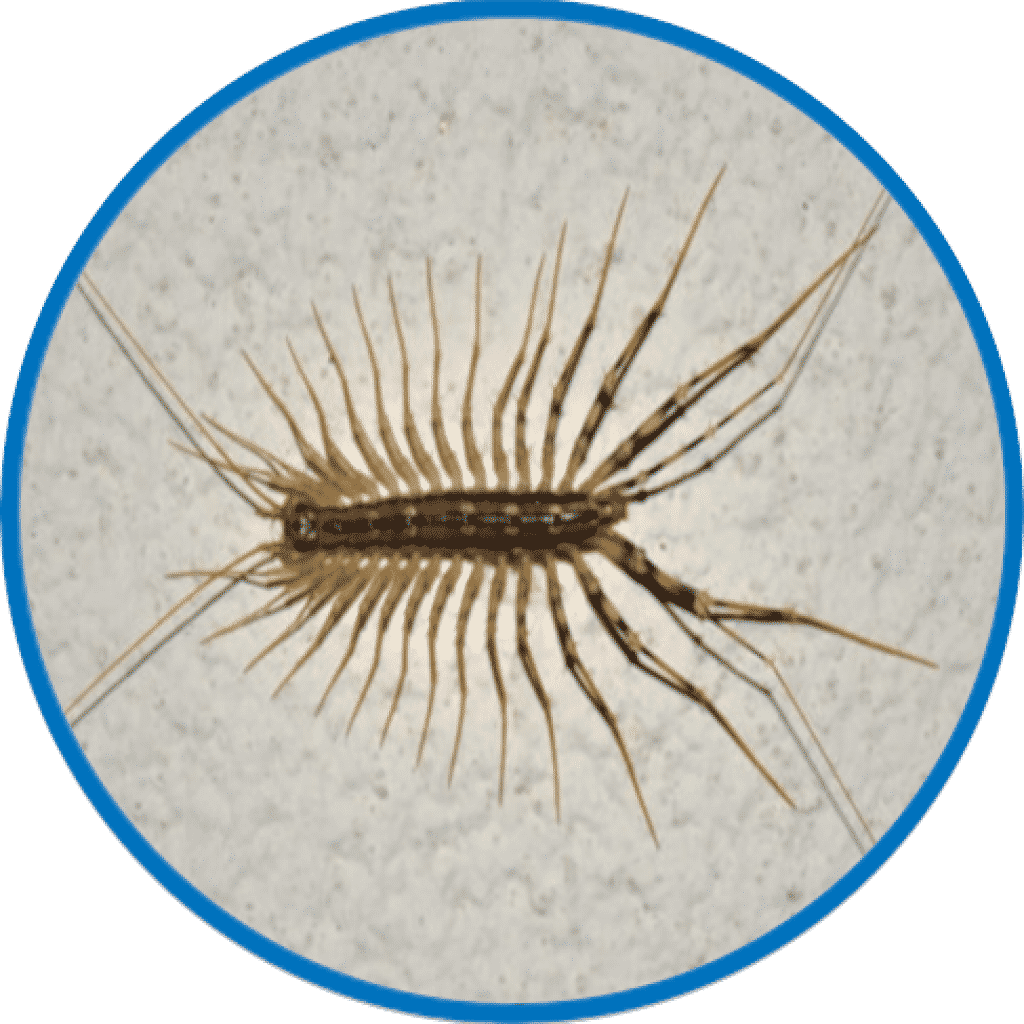COMMON INSECTS - Others
Description
Adults are 10 – 13cm long, wormlike and flat. Their coloration is yellowish to dark brown, sometimes with stripes or other markings. Most body segments will have 1 pair of legs. The number of legs depends on the species.
Biology
Centipedes usually lay their eggs in or on the soil. Scolopendra, the most common of house centipedes, lays about 35 eggs over a period of several days. Centipedes live from one to six years. All centipedes are poisonous, but most, like the house centipede, are really harmless towards humans.
Habit
Centipedes are found in high moisture areas, such as loose bark, under rocks, etc. Most centipedes are nocturnal. In the house they will be found in the basement, bathrooms, potted plants, anywhere where it is damp and where there food, insects, is found.
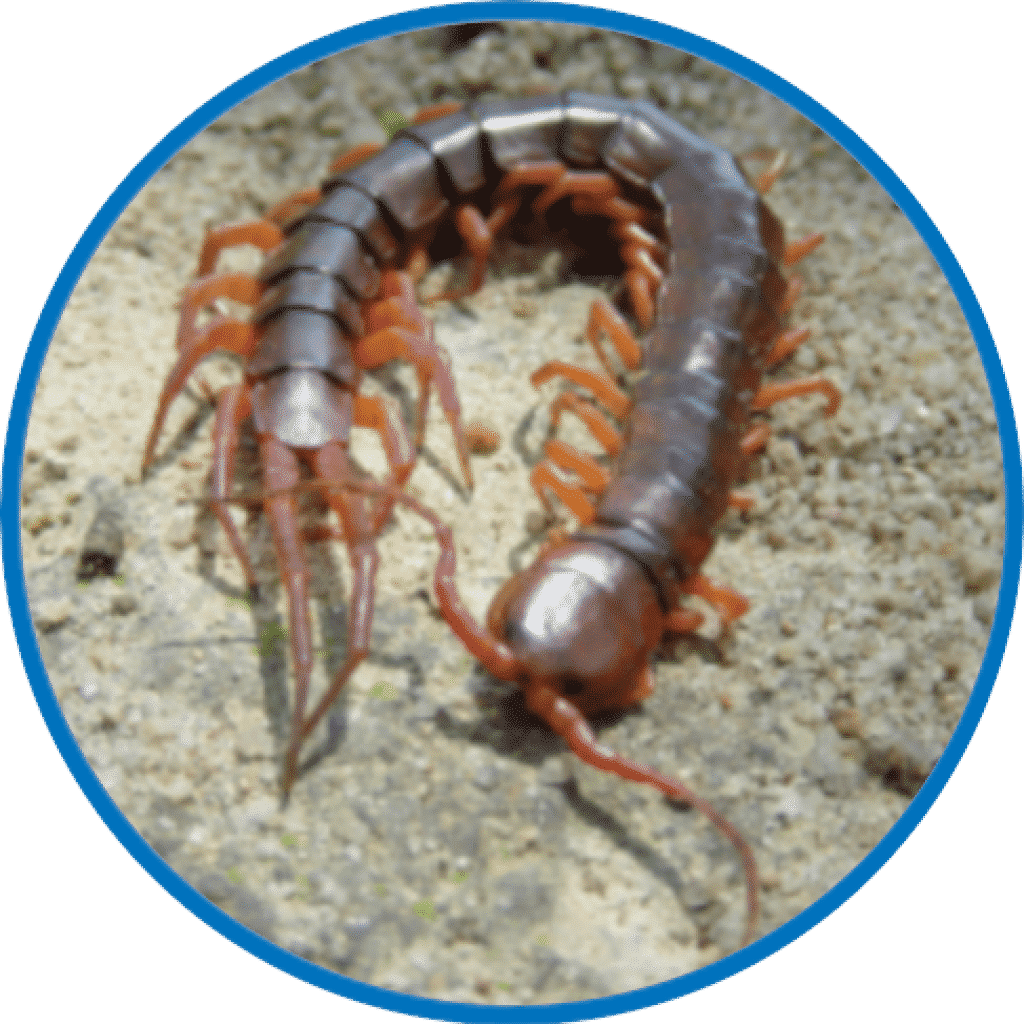
Description
Adults are 11cm long and are cylindrical and worm-like. They are blackish or brownish with either red, orange, or mottled patterns. Each body segments usually will bear 2 pairs of legs. The will have between 30-90+ pairs of legs.
Biology
The females lay between 20-300 eggs in soil cavities or among decaying organic matter during the summer. Eggs will hatch after several weeks. Adults will live for several years.
Habit
Millipedes require high moisture to live. They are often found under rubbish, piles of grass clippings, mulch, etc. Millipedes are nocturnal. Millipedes are primarily scavengers and feed on decaying organic matter
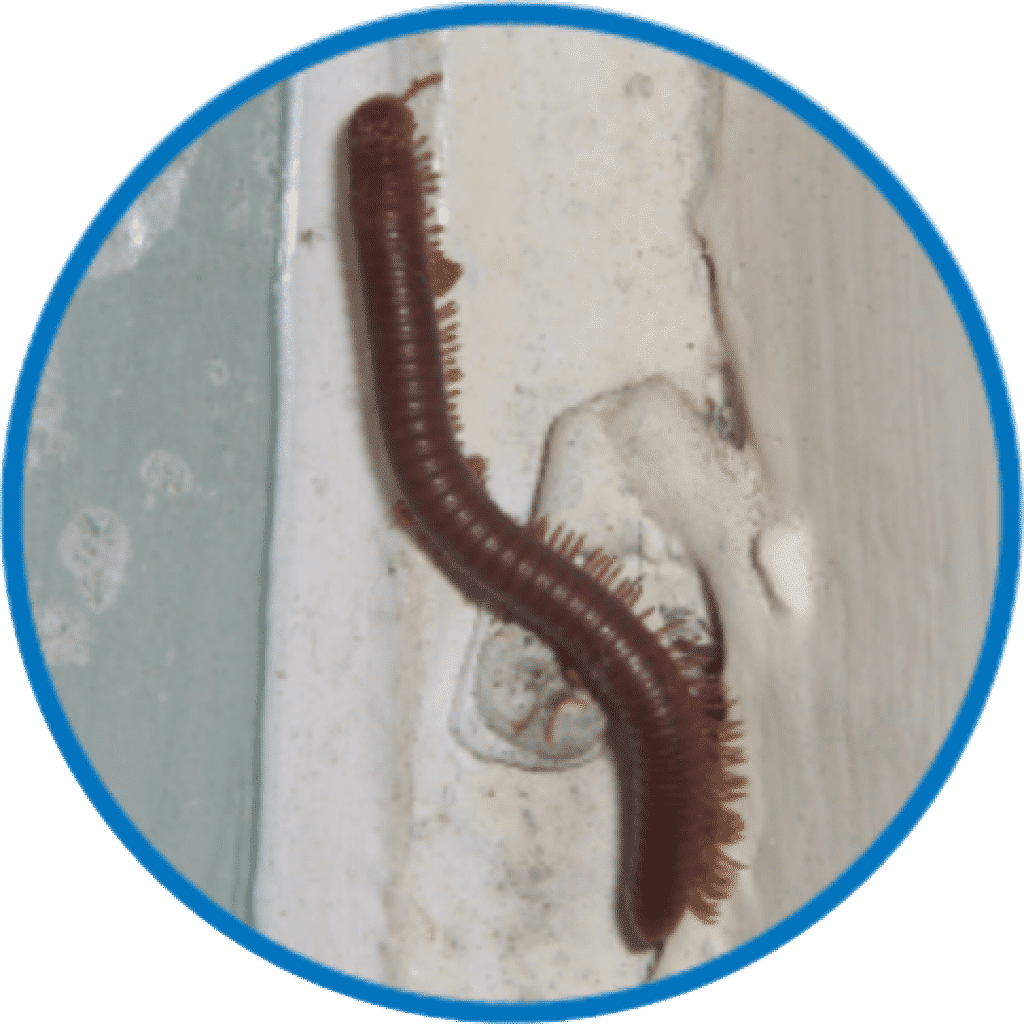
Description
The adult body length is 12mm excluding the tails at the end of the body. Their colour ranges from gray to almost black, with a metallic sheen. All silverfish bodies taper from head to tail.
Biology
Silverfish lay about 1-3 eggs per day, placing them in cracks, under objects, or just left exposed. The eggs will hatch when it is 72-90 degrees and at least 50-75% relative humidity. Developmental time takes about 3-4, but can take up to 2-3 years otherwise. Most silverfish will live about 3 years.
Habit
All silverfish are nocturnal and hide in cracks or crevices. They can be found almost anywhere in a house or commercial structure. Silverfish prefer areas of warmth and high humidity and can survive for weeks without food or water.
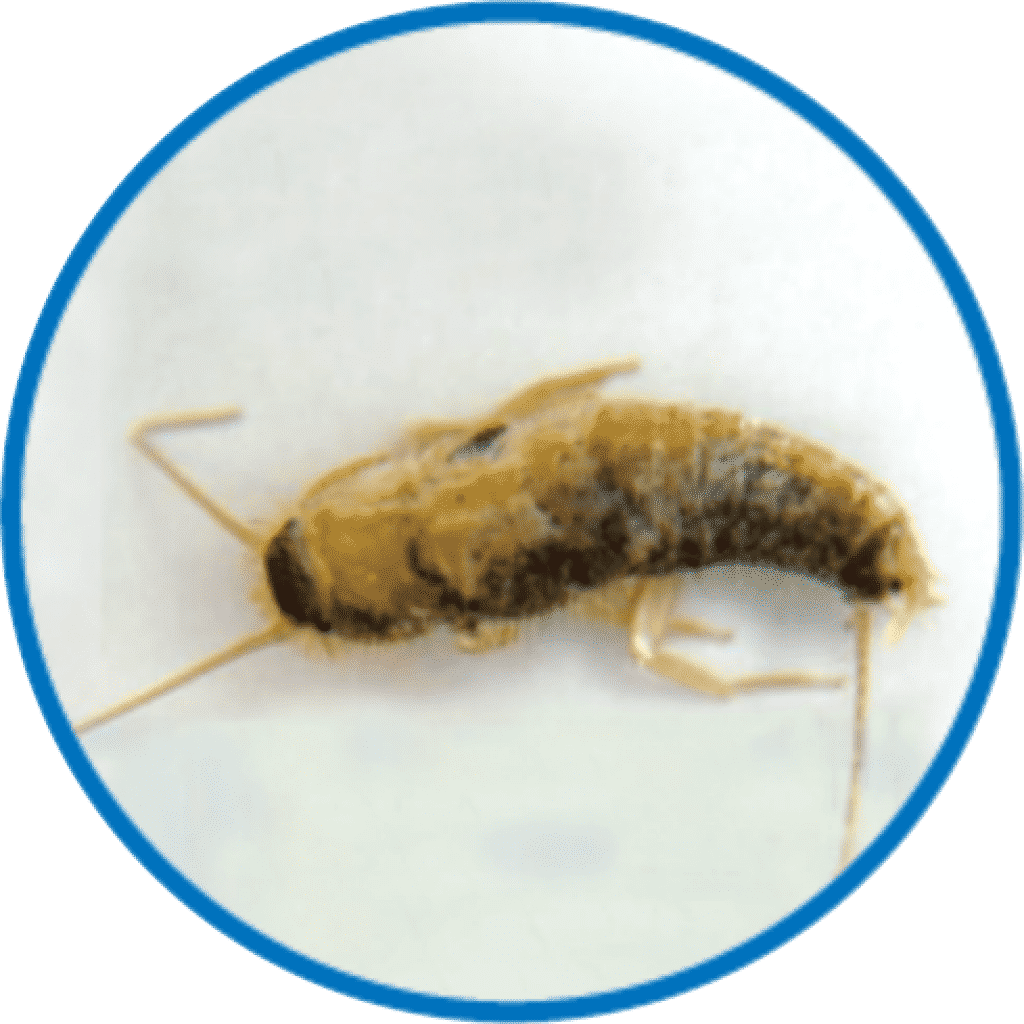
Description
Springtails are white, gray, or light-colored measuring about 1/16 inches long. They have a distinctive head with long antennae. Springtails get their name from a forked appendage attached to the end of the abdomen that allows them to spring forward like a flea. They have no wings
Biology
Springtails are always found in very humid situations. They are found in places like the bathroom, kitchens, around drains, potted plants, etc. They usually do not do any damage to anything.
Habit
They feed on algae, fungi, decaying vegetable matter, and some consume living plants and dead animal matter.
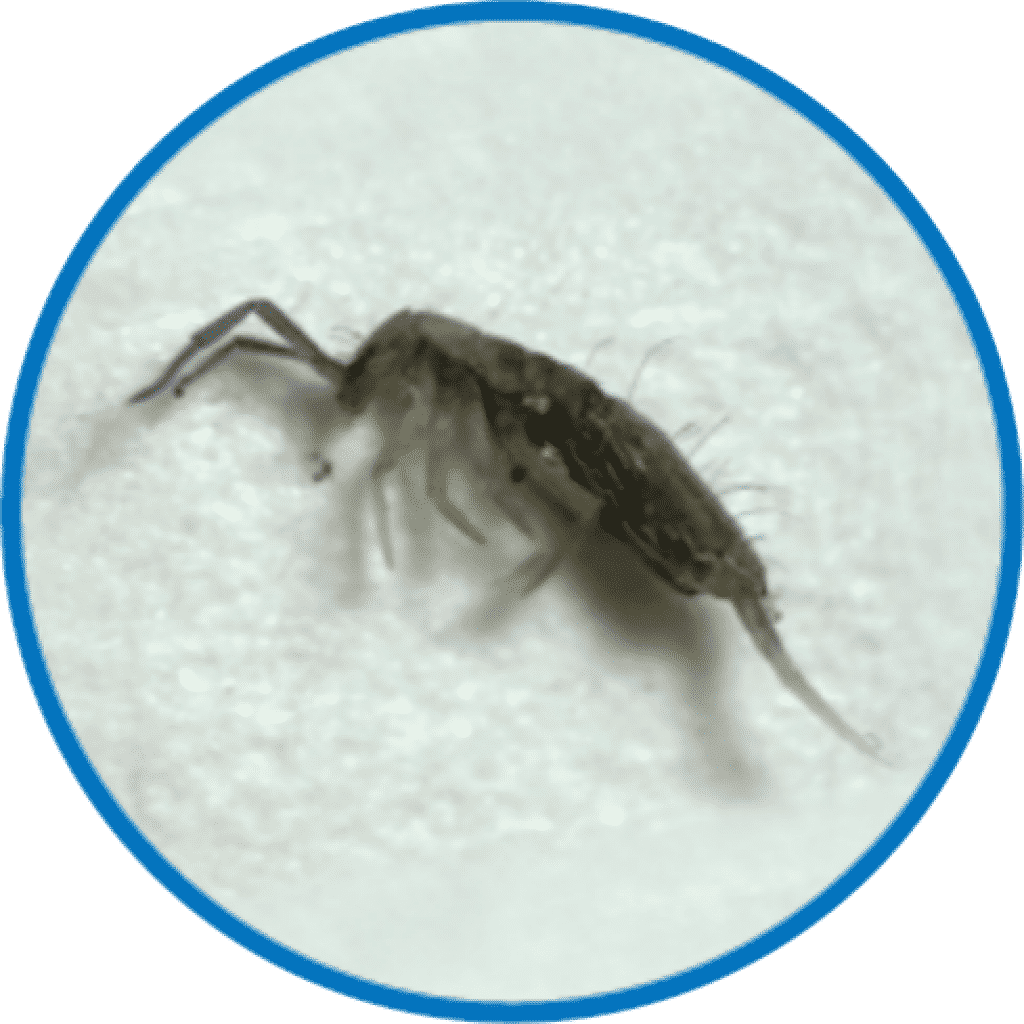
Description
Adult booklice are soft-bodied grayish-white to brown insects about 1-2mm long, and are usually wingless and generally found in damp, warm, undisturbed areas in buildings. Outdoor species are often referred to as barklice as they are normally found under tree bark or leaves.
Biology
Booklice are all female. Development occurs from unfertilized eggs. Each female is capable of laying in excess of 60 eggs. The young white nymphs emerge to feed on molds and mildews until they reach adulthood which can take between four to nine months.
Habit
Booklice feed on microscopic mold and mildew and are more often found on walls within the home when the weather is humid and damp. They do not bite humans or animals, spread disease or damage household furnishings.
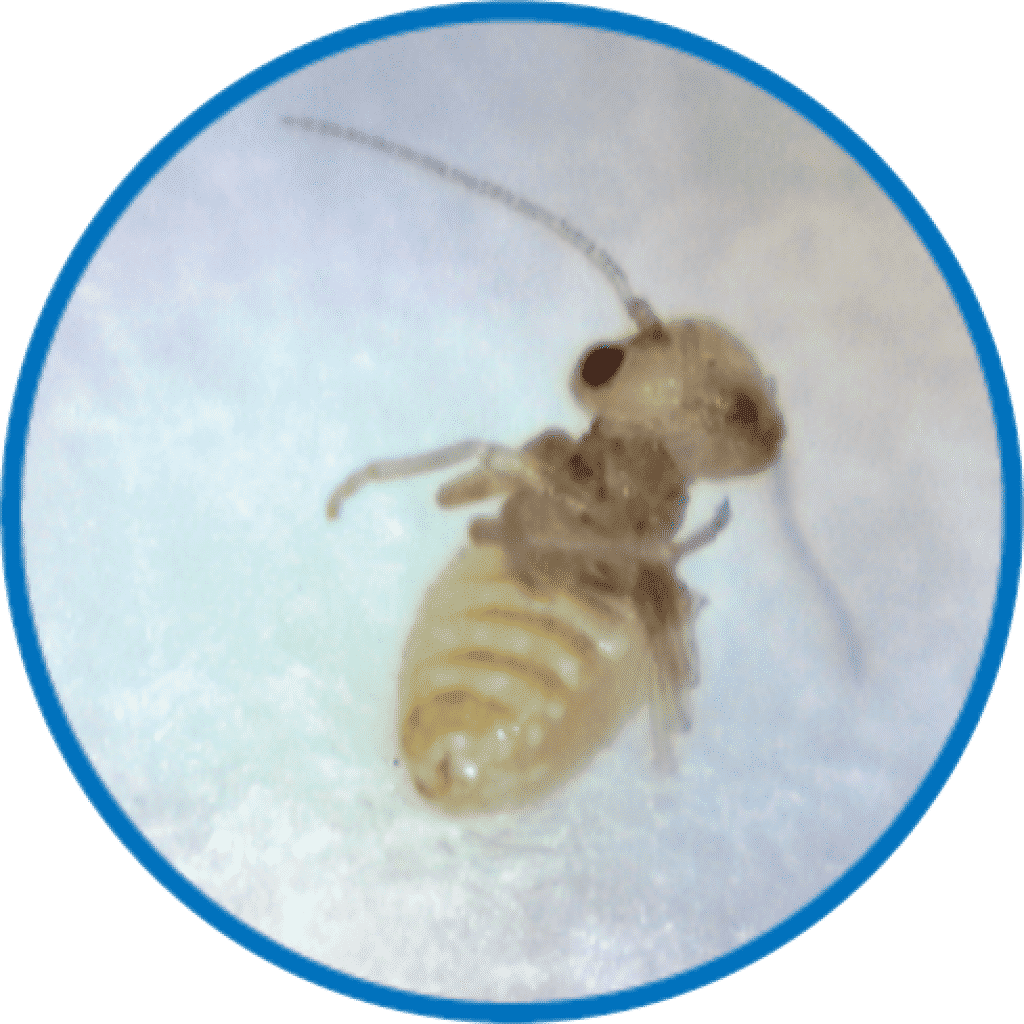
Description
Fungus beetle is a general term covering several different beetles associated with damp, humid conditions where fungi, molds and mildew occur. The beetles are small reddish brown to black in colour and 2-3mm long.
Biology
Eggs are laid on food material such as poorly-seasoned green lumber, wet plaster and chalk board, moldy grains, etc. and the larvae develop in the molds. Development from egg to adult depends on temperature. Their life cycle can be completed in 25 to 36 days and up to five months and longer at lower temperatures.
Habit
Fungus beetles are attracted to lights and feed on mold or mildews and are attracted to anything that is musty smelling. Moisture levels in new buildings will often attract these insects. They will be concentrated in areas of high humidity.
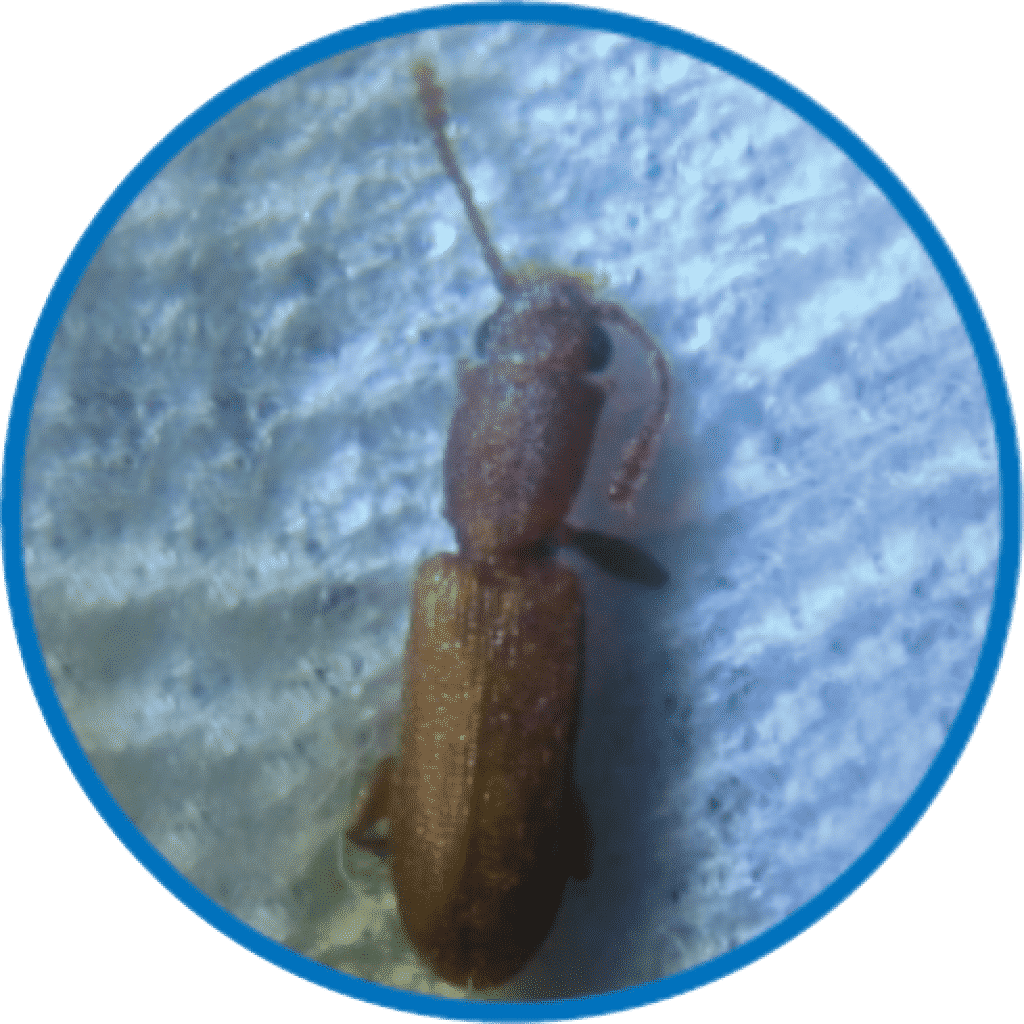
Description
The term “Carpet beetle” includes several species of Dermestid beetles that commonly feed on animal-based textile products. They average 2-5mm long.
Biology
BiologyAdults lay eggs on the larval food source, such as furs and woolen fabric or carpets. Eggs hatch in about 2 weeks and the larvae feed for varying periods, depending upon species and environmental conditions. When ready to pupate, the larvae may burrow further into the food or burrow elsewhere.
Habit
These beetles will attack almost any animal-derived material including clothing, tapestries, woolen blankets, upholstered items, furs, feathers, down, pet foods, and even animals carcasses in attics, crawl spaces, and basements.
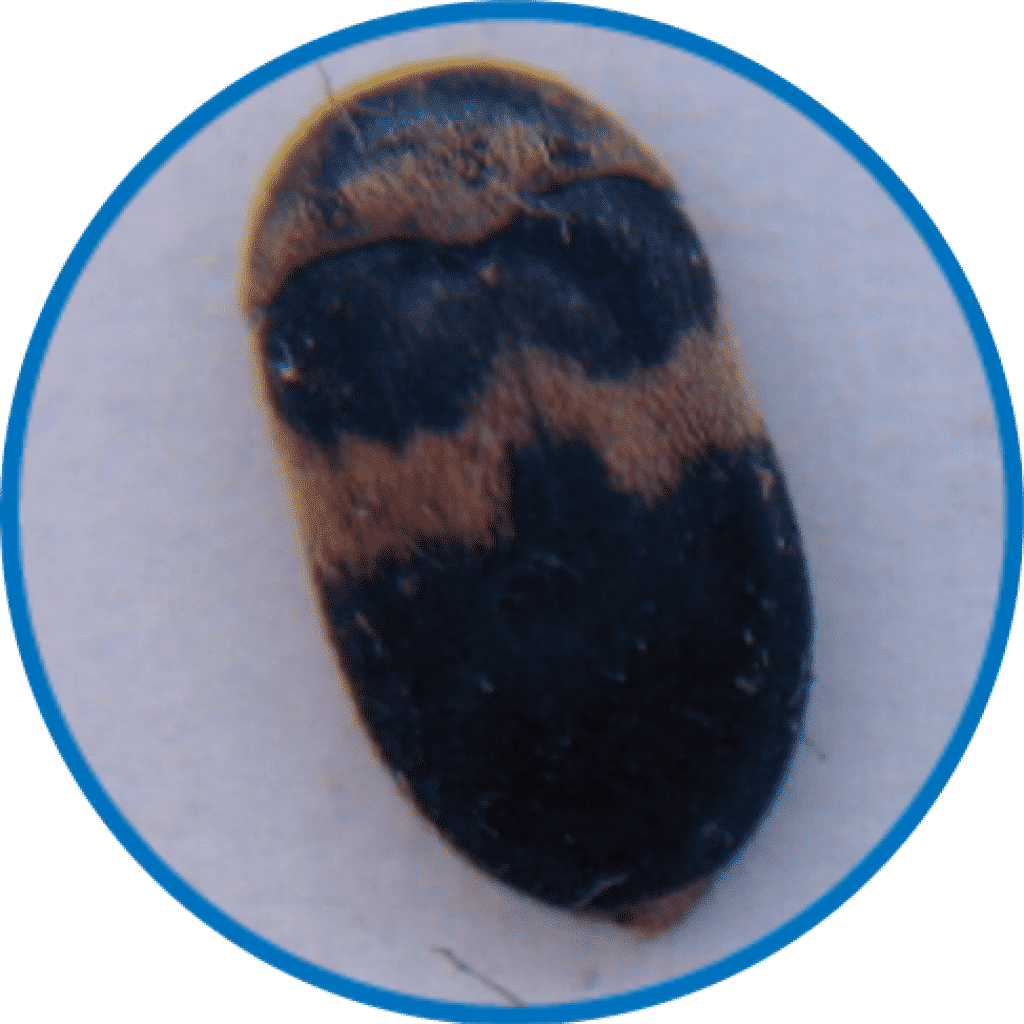
Description
Several types of weevils, including the rice, granary, maize and bean/pea weevils can be encountered in the home. The true weevils have a long snout on the head. The rice weevil is about 3-mm long dark reddish brown, with four pale spots on the upper surface. The granary weevil is slightly larger (4 mm), of the same body style and entirely dark chestnut-brown.
Biology
The egg, larva, and pupa stages of both weevils occur in the grain kernels and are rarely seen. The larvae are white, legless. The life cycle requires about 4 weeks and there may be three to five generations per year.
Habit
They are usually found in grain storage facilities or processing plants, infesting wheat, oats, rye, barley, rice, and corn. Although not often found in the home, sometimes they infest table beans, acorns, chestnuts, birdseed, sunflower seeds, and ornamental corn. They are occasionally found in macaroni and spaghetti.
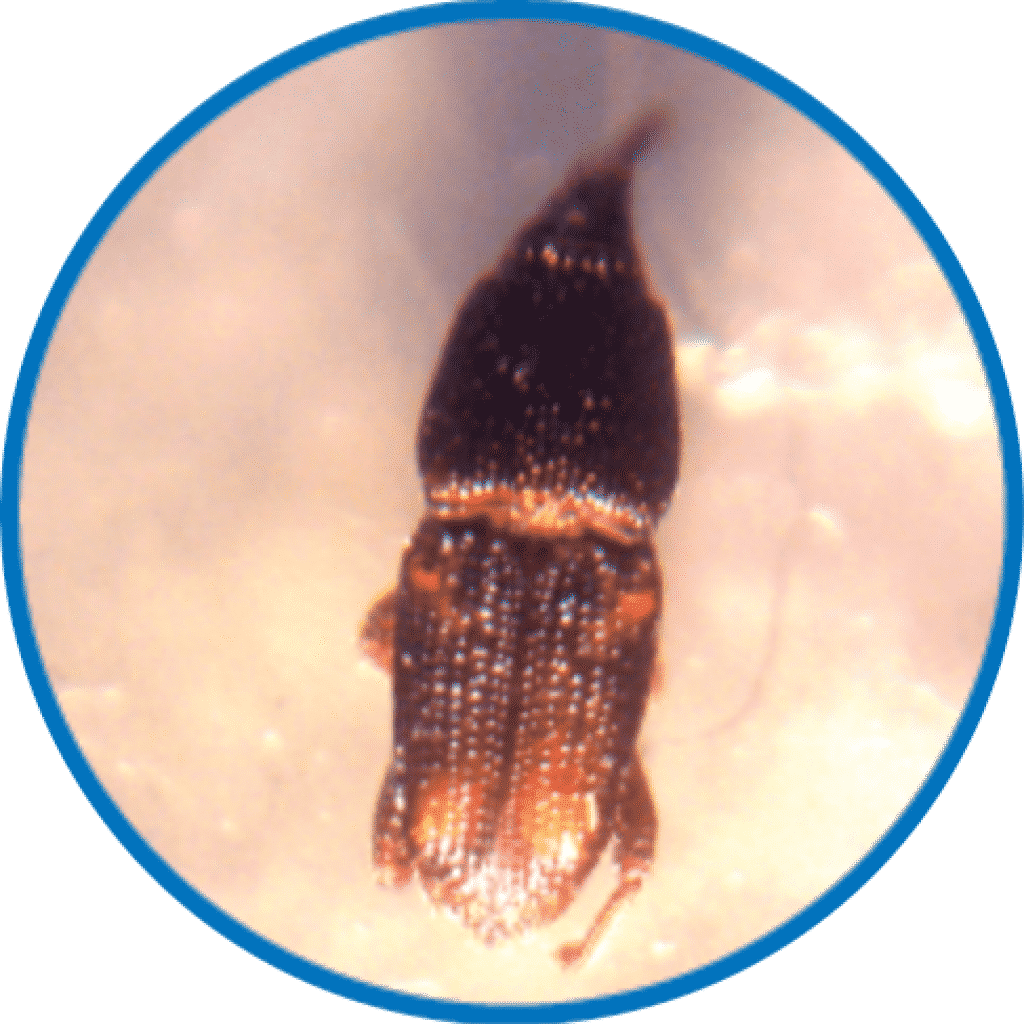
Description
Wolf Spiders are large, hairy spiders which are usually patterned with a mixture of black, gray, and brown. They are rarely pests, but they sometimes find their way into homes, where their large size often frightens.
Biology
The female wolf spiders lay dozens of eggs at a time and wrap them in a large ball of silk and will carry the egg sac on her abdomen until they hatch. As it grows the spider will shed its skin several times as it grows to an adult. Most wolf spiders live for several years.
Habit
Wolf spiders are active hunters that patrol the ground for insects, small spiders, and similar prey. They do not use webs to capture prey. Some wolf spiders build small burrows and defend a territory, others are free-roaming.
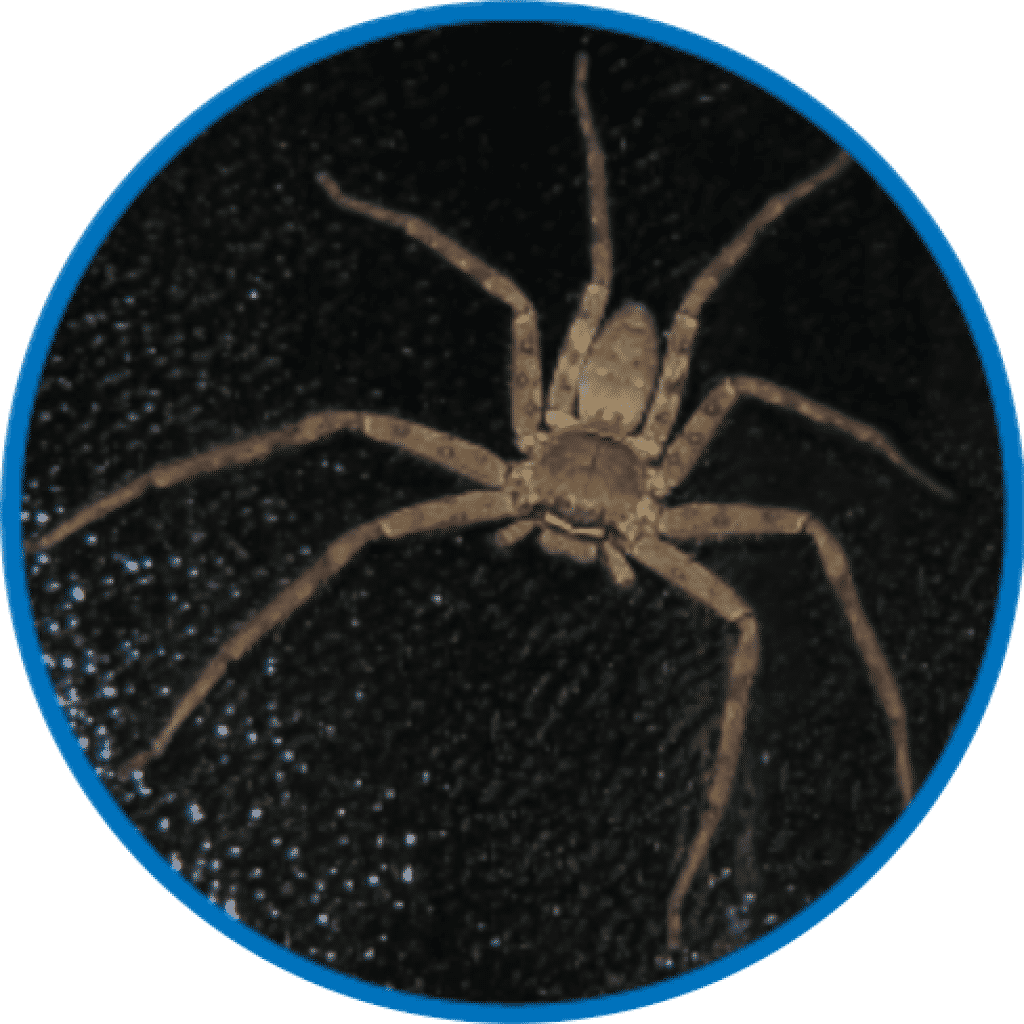
Description
European earwigs, the most common species, are reddish-brown, approximately 2 cm long with long antennae and a noticeable set of pincers which protrude from the abdomen. The pincers of the male are curved whereas those of the female are straight.
Biology
In early spring, after hibernating in soil, the female earwig lays up to 60 eggs near the surface of the soil. The eggs hatch after 7 days and nymphs emerge. The nymphs are similar to adults, only smaller. The nymphs develop into adults in about 70 days. Earwigs live for approximately one year.
Habit
Earwigs are a common garden insect that occasionally go indoors in search of moisture. Earwigs typically hide in dark, moist areas during the day and come out at night to search for food. They feed on decaying plant and animal matter and can also cause slug-like damage to garden plants such as flowers, fruits and vegetables.
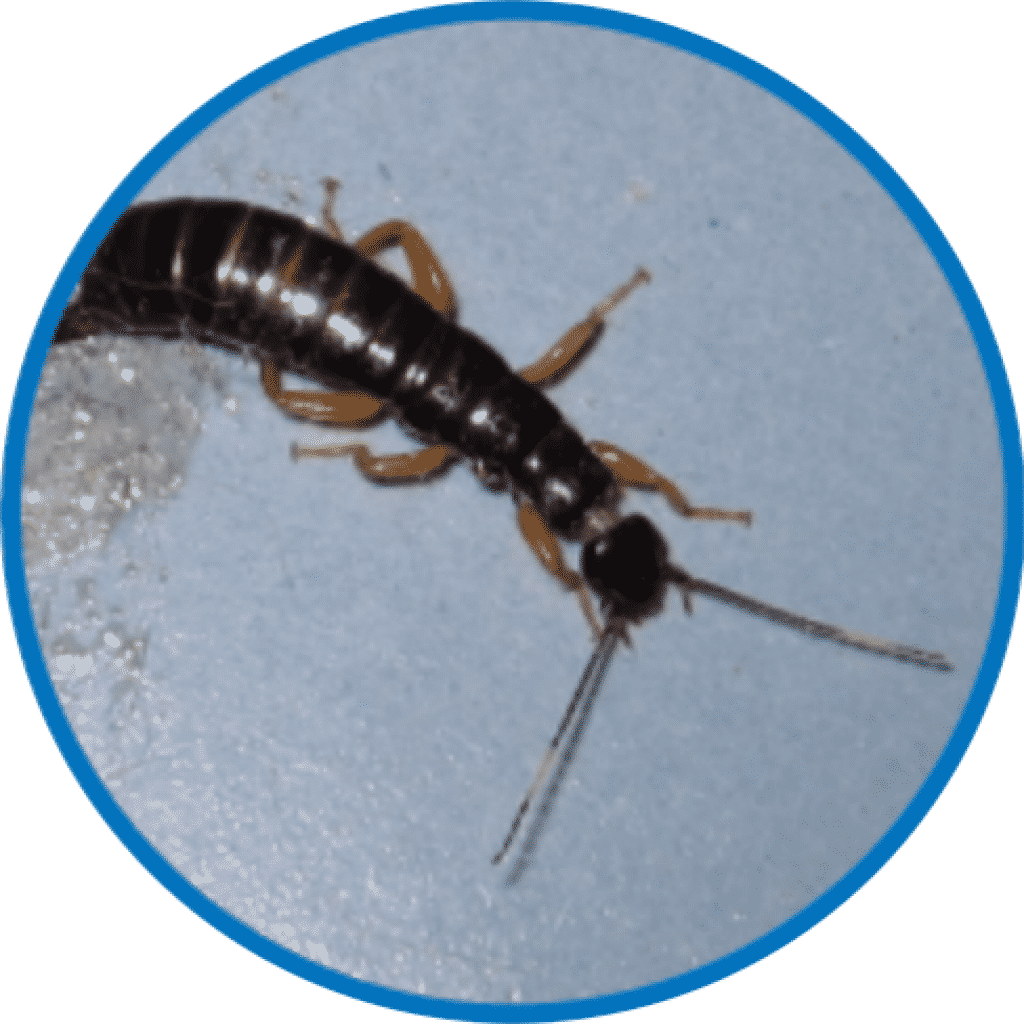
Description
House centipedes (Scutigera) are common arthropods with long, flattened, segmented bodies with one pair of legs per segment. The house centipede is up to 1 1/2 inches long and has 15 pairs of very long, almost thread-like, slender legs. Each leg is encircled by dark and white bands. The body is brown to grayish-yellow and has three dark stripes on top
Habit
Centipedes prefer to live in damp portions of basements, closets, bathrooms, unexcavated areas under the house and beneath the bark of firewood stored indoors. They do not come up through the drain pipes.
House centipedes feed on small insects, insect larvae, and on spiders. Thus they are beneficial, though most homeowners take a different point-of-view and consider them a nuisance.
